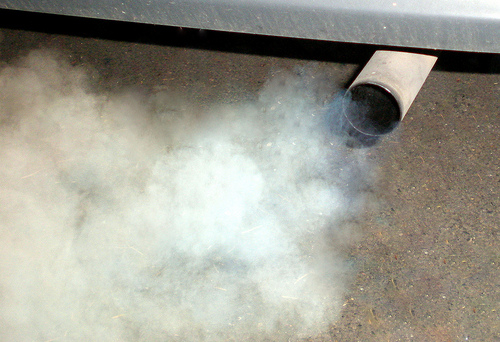Last Update: July 4, 2015

Combustion of 1 U.S. gallon (3.8 L) of gasoline produces 8.74 kilograms (19.3 lb) of carbon dioxide (2.3 kg/l), a greenhouse gas. [Wikipedia1]
Combustion is not complete, meaning that vehicle exhaust contains uncombusted gasoline, which reacts in sunlight to produce photochemical smog.
While crude oil, and gasoline, contain lots of highly toxic chemicals (See What’s in Crude Oil? A lotta toxic stuff, Benzene, Tuolene, etc), the combustion process converts gasoline to other chemicals. Some of those chemicals, and their effects, include the following [Wikipedia2]
- NOx Mono-nitrogen oxides NO and NO2 react in the atmosphere with ammonia, and other compounds, to form nitric acid particles. Small particles can penetrate deeply into lung tissue, and can cause premature death. One effect is to worsen or cause respiratory diseases like emphysema and bronchitis.
- Volatile Organic Compounds When oxides of nitrogen (NOx) and volatile organic compounds (VOCs) react in the presence of sunlight, ground level ozone is formed, a primary ingredient in smog.
- Ground level Ozone irritates the respiratory system, causing coughing, choking, and reduced lung capacity, and has many bad effects throughout the ecosystem.
- Carbon Monoxide is colorless, odorless and tasteless, but highly toxic. It combines with hemoglobin to produce carboxyhemoglobin, which is ineffective for delivering oxygen to bodily tissues.
- Benzene, etc can damage bone marrow, cause excessive bleeding, depress the immune system, cause leukemia or other cancers.
- Particulate Matter are known to cause or worsen a variety of cardiovascular diseases. The particles can penetrate deeply into lung tissue.
- Carbon Dioxide is a potent greenhouse gas. Motor vehicle CO2 emissions are part of the anthropogenic contribution to the growth of CO2 concentrations in the atmosphere which according to the vast majority of the scientific community is causing climate change.


